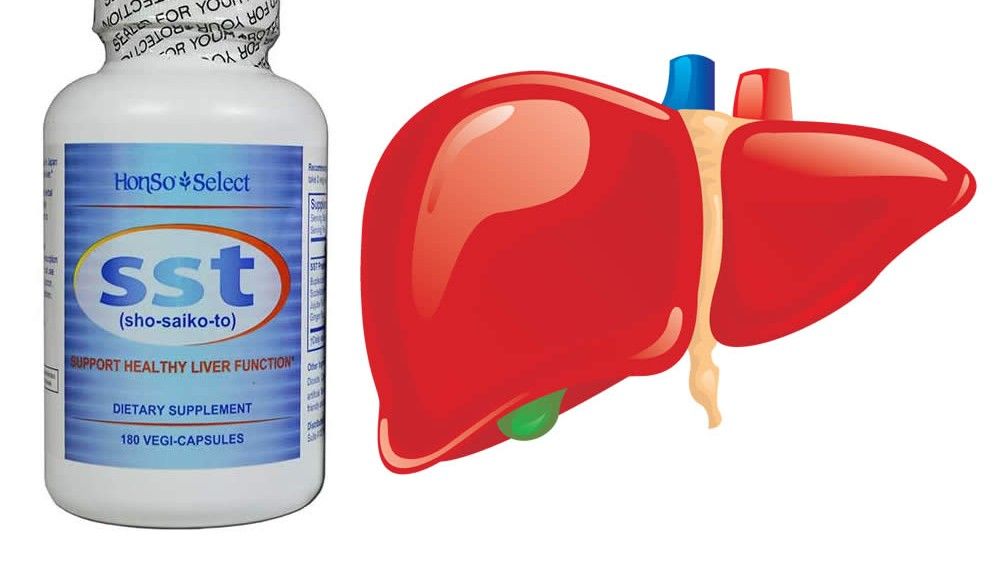
Previous
Aerobic Exercise – A Smart Route for Battling a Fatty Liver

Next
Good Reason to Thwart Fatty Liver Disease
SST Is Back
SST’s temporary disappearance had nothing to do with the product itself, but with the constraints of lawful herbal supplement sales and marketing.
The formula upon which SST is derived has a long history of helping conditions related to the liver and gallbladder. Despite the time-tested strength this formula displays in supporting several areas of human health, sales and marketing restrictions rendered it unavailable for a short amount of time. Luckily, the obstacle hindering the sale of SST has been resolved, making this legendary supplement accessible to consumers once again.
Known in Traditional Chinese Medicine as Xiao Chai Hu Tang, the herbal formula known as SST originated during the Eastern Han Dynasty (25 AD – 220 AD). Comprised of seven ingredients, Xiao Chai Hu Tang was traditionally brewed as a tea. Although this potent brew was very effective, the labor involved in its preparation and the pungent, bitter taste dissuaded many potential benefactors from taking it. Comprised of the exact same seven ingredients as Xiao Chai Hu Tang, SST is a compliant-friendly capsule that doesn’t require brewing a tea or tasting the potent herbs.
Xiao Chai Hu Tang is one of the most used formulas in Traditional Chinese Medicine today. This is because the formula is expertly balanced, providing herbs to balance the liver, cool liver heat, dry dampness and harmonize the digestive system while simultaneously strengthening the qi (energy) and the blood. Although these properties might not be familiar to a Western-trained physician, they apply to many common chronic illnesses affecting the liver and gallbladder. As such, healthcare practitioners from all disciplines rely on Xiao Chai Hu Tang (or SST) for supporting liver and gallbladder health.
Unfortunately, SST was unavailable for a while because of disease claims made in the marketing and advertising arena. The Dietary Supplement Health and Education Act of 1994 (DSHEA) established some special regulatory procedures for claims for dietary supplement labels and related marketing materials. According to Food and Drug Administration (FDA) guidelines, labeling or marketing for an herbal formula must not contain references to any known diseases. Likely because of prominent research being conducted with SST on people with Hepatitis C in a well-known U.S. medical facility, and it being the leading prescribed medicine in Japan for hepatitis, the manufacturer felt confident disclosing SST’s use for this common liver infection.
It may seem unfair that an herbal formula’s part in a research study or its use in a different country be concealed in its promotion; however, there is a valuable reason behind this legislation. The FDA aims to protect the public from erroneous claims that any substance (herbal, vitamin or pharmacological) benefits a disease if it has not been tirelessly proven to do so. The purpose of this rule is to prevent propaganda from taking the place of sound medical advice.
For the most part, Americans are lucky that their government protects them from putting their faith in, purchasing and taking ‘snake oil’ remedies for their health problems. However, there are many herbal supplements (especially those that have been studied for decades – or centuries) with clear benefits for specific diseases – that are unable to promote this benefit. Unless the supplement’s manufacturer has funding on par with a pharmaceutical company to finance the process of becoming FDA-authorized for a disease claim, insinuating that a supplement helps a disease is illegal.
Thankfully, this legal matter is in the past and SST’s manufacturer is now in compliance with the DSHEA. As such, it will be a tad more difficult for those who could truly benefit from this seven-herb formula to learn of its value to their liver. Nonetheless, those who are willing to do some extra research on the evidence supporting this formula’s use for chronic liver disease are in luck, because SST is finally back.
http://www.acupuncturetoday.com/mpacms/at/article.php?id=31544, Herbal Monograph for Xiao Chai Hu Tang, John Chen, PhD, PharmD, OMD, Lac, Retrieved April 1, 2012, Acupuncture Today, July 2007.
http://www.fda.gov/food/labelingnutrition/labelclaims/ucm111447.htm, Claims That Can Be Made for Conventional Foods and Dietary Supplements, Retrieved April 1, 2012, U.S. Food and Drug Administration, 2012.
http://www.mskcc.org/cancer-care/herb/sho-saiko, Sho-saiko-to, Retrieved April 1, 2012, Memorial Sloan-Kettering Cancer Center, 2012.
http://www.travelchinaguide.com/intro/history/han/eastern.htm, Eastern Han Dynasty, Retrieved April 1, 2012, TravelChinaGuide.com, 2012.







i’m glad that Traditional Chinese Medicine is making a comeback, finally.Â
USA doctors will disagree! Trust me. My GI doctor said you can take anything you want;it won’t do any good! Howda like that answer! HCV gene-type2
My first treatment in 2009 for HCV was with SST, my physician discontinued the treatment after about four weeks because both liver enzyme tests (alt/ast) were considerably higher and my blood pressure went from normal to 180/110, this may have been an anomaly but after nearly two years using LIVERCEL I am doing well by objective medical measurements Â
what makes your GI God? would he bet his life? thats how i like that answer
I go to the top liver specialst at UCLA.I asked him about this supplement and he said by no means take it.It can cause blood pressure problems and can cause your liver and gaul blader to get even worse.Funny how this website gives you a link to buy it.
Just remember that the medical gurus want us to stay sick for their profit! I won’t try anything that may damage my liver but it can’t be any worse than interferon based treatment which has wreaked havoc on my life now for 5 yrs…I was healthy until treated and relapsed…